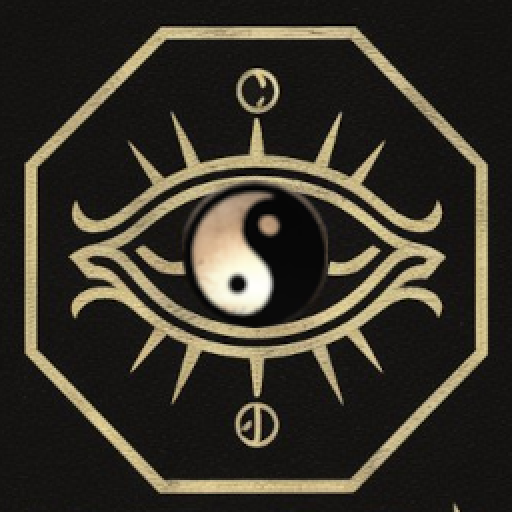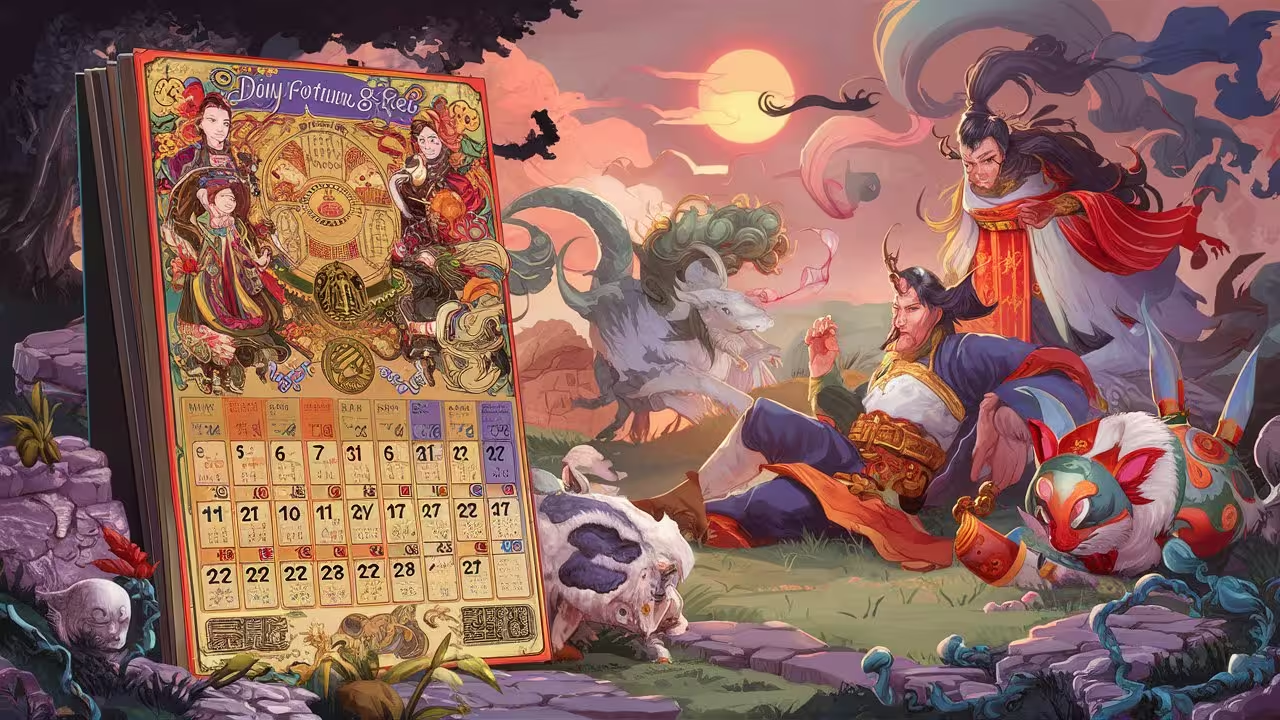In the East, an ancient and mystical field stands out. It’s more than just a timekeeper. It’s a life guide, blending astronomy, geography, philosophy, and customs into a full calendar system. This system lays out “Recommended” and “Discouraged” for each day. They’re brief but carry deep meaning. They once illuminated the way for our ancestors. Now, they offer a peek into the daily tips from Eastern Calendar or we call it Chinese calendar.
This article aims to explore these daily guidelines. It will trace their historical roots, uncover cultural and historical insights, and assess their impact today. Join us in appreciating the wisdom that spans the centuries.
Section One: The Historical Evolution – A Journey from Ancient Wisdom to Modern Legacy
Origins and Early Development: From Pre-Qin to the Qin and Han Dynasties (circa 2070 BCE to 220 CE)
Long ago, in the mysterious times of ancient China, the first sparks of the Huaxia civilization ignited. From this fertile ground, the revered Yellow Almanac was born. Our ancestors looked to the stars, using them as a compass to decode the universe’s secrets and the rhythms of nature. They watched the sky’s patterns and the farming cues of seasons and solar terms, giving rise to an ancient wisdom. This wisdom was a fusion of astronomy, timekeeping, farming, and divination, now recognized as the Chinese Calendar.
During the Pre-Qin period, various schools of thought competed for attention. Each brought deep understandings of time, the cosmos, and human fate. These ideas set a rich philosophical stage for the Chinese Calendar’s growth. As the Qin and Han dynasties brought unity, with centralized power and cultural unification, the calendar moved toward a more organized and standardized form. It became crucial for royal ceremonies and farming patterns, weaving itself into the daily life of the people, a vital tool for all.
Growth and Refinement: Tang-Song to Ming-Qing Dynasties (618 AD – 1912 AD)
From the Tang to the Qing dynasties, China experienced an era rich in culture and innovation. During this time, the Chinese Calendar absorbed centuries of knowledge, evolving significantly.
In the Tang and Song periods, scholars integrated the calendar’s insights into their poetry and music. This practice turned the calendar into more than a tool—it became a wellspring of creativity. As fields like astronomy and calendrical science advanced, the calendar’s codification grew more accurate, and its content diversified. It encompassed celestial events, agricultural timing, and traditional aspects like Feng Shui and destiny, forming a unique system.
The Ming and Qing dynasties saw the calendar’s influence peak. A household staple, it directed daily routines and farming. Thanks to widespread printing, it became accessible to all, a beloved part of public reading. This version of the calendar honored past wisdom while adapting to contemporary life, serving as a bridge between the old and new, and the earthly and divine.
Heritage and Transformation: Modern Era to Present (1912 AD – Present)
In an era of unprecedented change, the traditional Chinese calendar remains a cultural touchstone in China, with enduring appeal and deep roots.
The relentless march of technology and cultural shifts bring new challenges and opportunities for the calendar. The fast pace of contemporary life has indeed lessened the focus on cultural traditions. Yet, the introduction of MysticOmni – Daily Tips has given the calendar a new lease on life. Today, with apps and social media, accessing the calendar’s advice on favorable and unfavorable days is a breeze, allowing people to connect with the wisdom and charm of this cultural legacy.
Globalization and increased cultural exchanges have also put the calendar in the global spotlight. A growing number of international enthusiasts are uncovering this cultural treasure, recognizing its rich history and allure. This trend fosters greater cultural exchange and appreciation, and it injects fresh vitality into the calendar’s ongoing legacy and development.
Section Two: Cultural and Historical Knowledge Involved: The Wisdom of Unity between Heaven and Man
Yin-Yang and the Five Elements Theory
The traditional Chinese calendar is anchored in the profound principles of Yin and Yang and the Five Elements, which shape its approach to identifying auspicious and inauspicious moments. Yin and Yang embody the concept of dualism, symbolizing complementary opposites like heaven and earth, the sun and the moon, and male and female. The Five Elements—metal, wood, water, fire, and earth—encompass the basic substances and their dynamic relationships.
The calendar assigns each day a unique combination of Heavenly Stems and Earthly Branches, initiating a 60-year cycle that reveals the day’s elemental attributes. For instance, a day under the wood element’s influence is well-suited for activities aligned with growth and expansion, such as planting or tree pruning. Conversely, on such a day, it’s wise to steer clear of actions that are at odds with the earth element, like excavation or ground-breaking ceremonies.
Astronomical and Calendar Knowledge
Astronomy is the cornerstone of the traditional Eastern calendar’s creation. Ancient scholars meticulously tracked the sun, moon, and stars to pinpoint significant celestial occurrences, such as equinoxes, lunar phases, and constellations. This celestial data provided the basis for the calendar’s advice on favorable and unfavorable moments.
Consider the equinoxes, moments when day and night are equally divided. They are regarded as perfect for festivities like weddings and embarking on trips. Conversely, events like eclipses, which alter the sky’s normalcy, are deemed inauspicious, suggesting it’s best to hold off on significant ventures.
Folk Culture Traditions
In the traditional Eastern calendar, the concepts of auspiciousness and taboo are deeply woven into the rich tapestry of Chinese folk culture. A plethora of beliefs and customs surrounding luck and prohibitions have been handed down through the ages, becoming integral to the calendar’s advice.
Take the Spring Festival, for instance, where these customs are particularly evident. It’s customary to display couplets and set off firecrackers to ward off evil spirits. Meanwhile, breaking crockery and uttering words that foretell bad luck are avoided at all costs, as they’re thought to bring about misfortune.
Section Three: Significance to Modern Life: The Integration of Tradition and Modernity
Application in Daily Decision-Making
When confronted with life’s myriad choices, the traditional Eastern calendar provides a guide for identifying auspicious and inauspicious times, yet it shouldn’t govern every decision. For significant life events such as weddings or relocations, a comprehensive approach is advisable. This means considering the calendar’s insights, but also accounting for personal circumstances, weather forecasts, professional obligations, and other relevant factors. In this way, you pay homage to tradition while ensuring that your decisions are practical and well-informed.
Promotion of Personal Growth and Self-Reflection
The traditional Eastern calendar iswwwwn’t just about picking dates—it’s a treasure trove of profound philosophical wisdom and life lessons. By incorporating its guidelines, one can foster daily reflection, promoting a positive approach to life and the cultivation of solid values. For instance, days designated for tranquility over action aren’t about being inactive; they’re an invitation to pause, review past steps, and map out future goals.
Psychological Solace and Spiritual Support
In the whirlwind of modern living, the stress and hurdles can be immense. Here, the traditional Eastern calendar’s daily insights into auspicious and inauspicious moments offer solace and a spiritual anchor. Following these suggestions can bring a sense of peace and reassurance. While the guidelines might hint at the supernatural, it’s their deep cultural relevance and the thoughtfulness they embody that truly connect with individuals.
Family Heritage and Cultural Exchange
The traditional Chinese calendar is a linchpin in family customs and cultural dialogues, offering daily advice on auspicious and inauspicious activities. In many Chinese homes, the calendar’s wisdom is a legacy passed down through generations, representing the ongoing transmission of family heritage and understanding. As the world globalizes and international engagement intensifies, the calendar also serves as a bridge for cultural conversations that transcend China’s borders.
In Europe and America, where Chinese culture captivates many, exploring the calendar’s guidance leads to a deeper appreciation for the unique charm and intelligence embedded in eastern traditions. It’s a window into a worldview that offers fresh perspectives and enriches cross-cultural understanding.
Scientific Rationality and Flexible Application
In our contemporary world, it’s essential to approach the daily Tips from the traditional eastern calendar with a scientific mindset. We should avoid falling into excessive superstition while also not rejecting it outright. Although science has shed light on many of nature’s mysteries and societal phenomena, the calendar’s advice, as a cultural heirloom and a type of folk tradition, still holds value and significance. It’s a piece of our shared history that can offer insight and wisdom, even if we choose to interpret it through a modern lens.
Promotion of Cultural Diversity and Understanding
In our globalized world, cultural blending is a tide that’s here to stay. The traditional eastern calendar, a treasure of China’s cultural legacy, intrigues and engages people across the globe. Its unique charm attracts learners from various backgrounds. Embracing these differences not only promotes cultural diversity but also cultivates understanding and friendship among cultures.
Cultural exchange is now a two-way street, and the Eastern calendar’s daily tips is a prime example. It’s more than just a guide—it’s a bridge connecting people. By respecting these traditions, we enrich our own perspectives and build a more harmonious global community. And that’s a trend that’s definitely worth embracing.
The Confluence of Technology and Tradition
In our hectic modern lives, stress is the constant companion, and challenges are just part of the deal. That’s where the traditional eastern calendar comes in, offering a serene guide and a spiritual sanctuary. With the convenience of smartphones, users can easily access apps like mysticOmni – DailyTips that deliver this timeless wisdom in a sleek, modern package.
This fusion of technology and tradition revitalizes the calendar, making it more accessible and user-friendly. It’s not just about keeping traditions alive—it’s about making them relevant for today’s world. By doing so, we open a door to the profound and enigmatic world of Chinese cultural heritage, inviting everyone to explore its depths.

